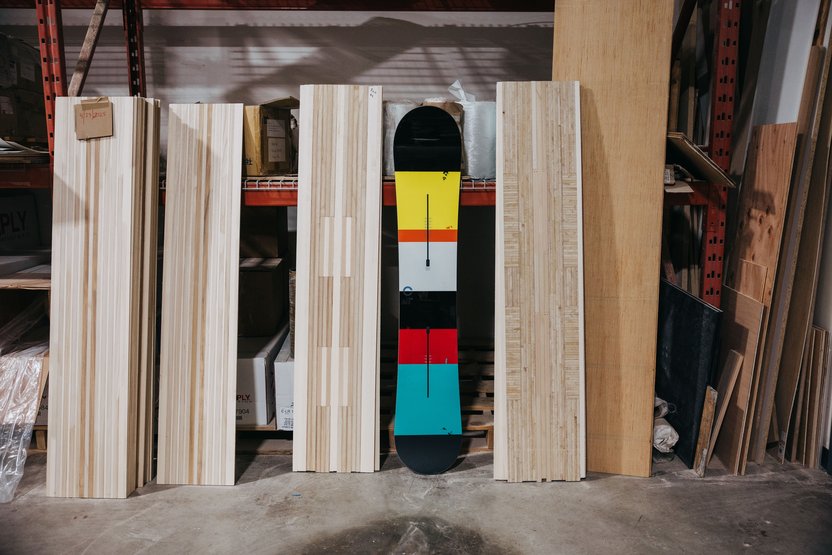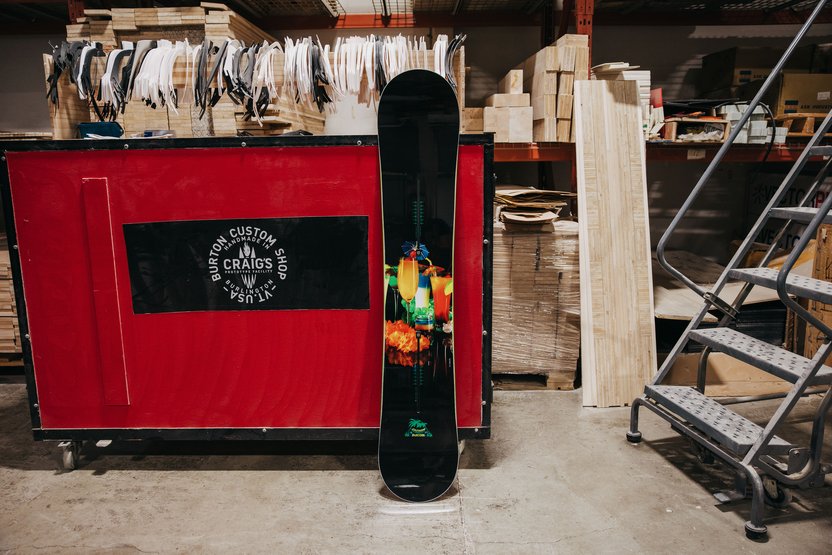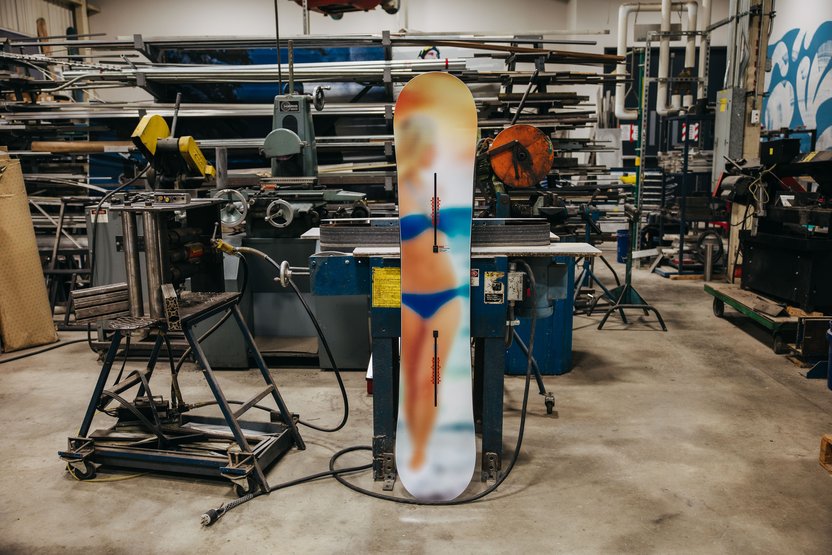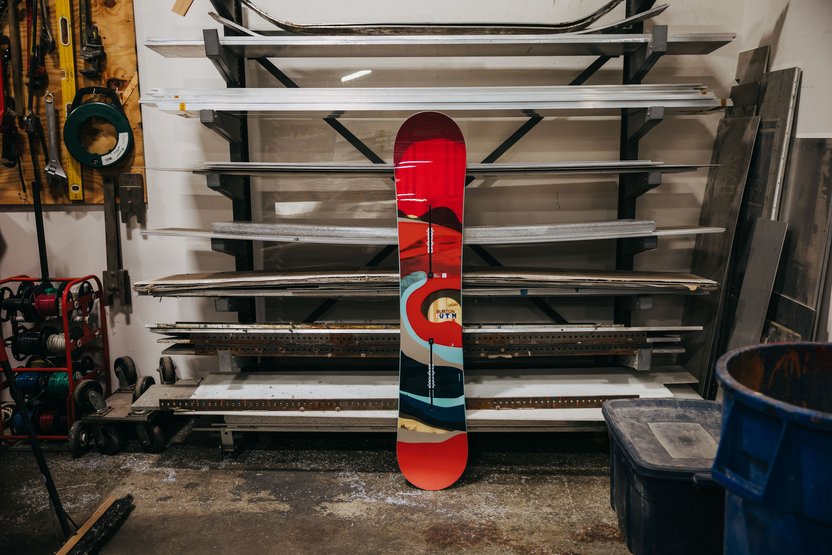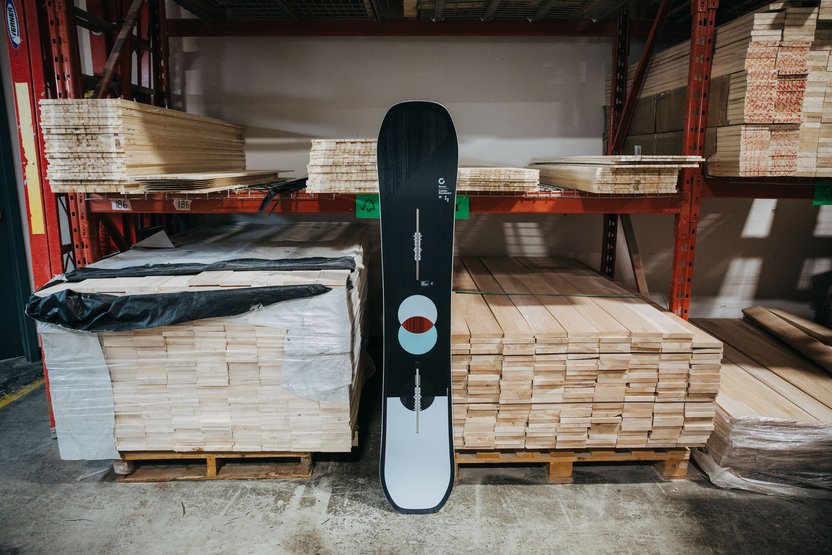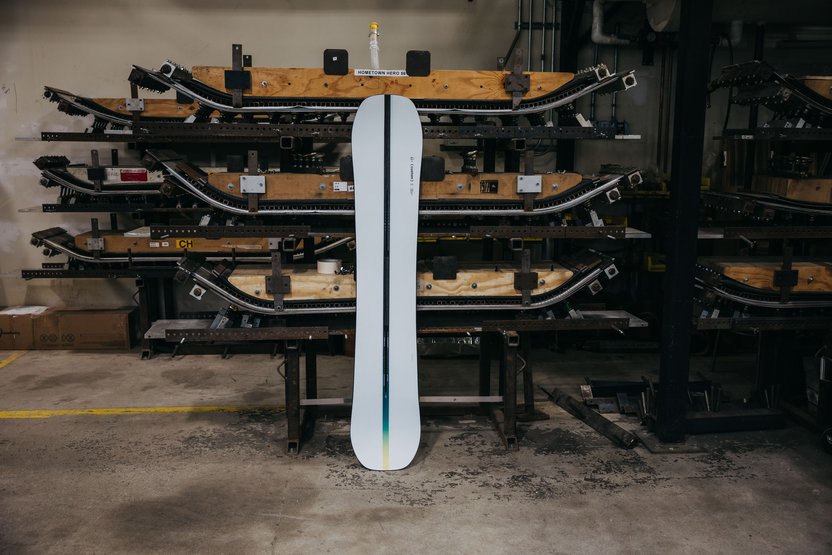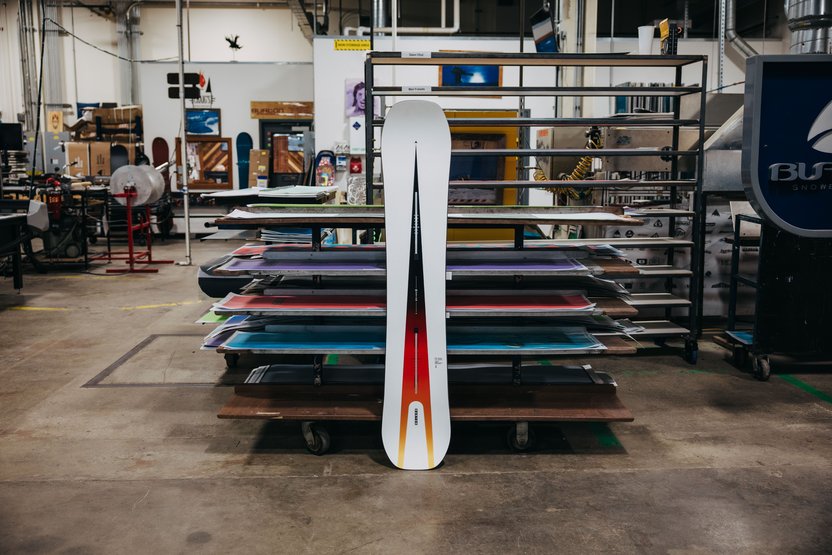From Prototype to Icon: The Burton Custom Turns 30
From Prototype to Icon: The Burton Custom Turns 30
Sometimes the greatest successes come from the most unexpected places, and that’s the Burton Custom to a t. What started as a last-minute prototype, squeezed into a Burton sales meeting in the early ‘90s, would eventually become a snowboarding icon, and it just turned 30. But the Burton Custom is much more than just a snowboard; it’s a symbol representing our commitment to progression, of materials, building techniques, art, and the sport. Custom was a catalyst for change, and one that was embraced in ways we could never have imagined.
It’s high time to celebrate the best-selling snowboard of all time and crown jewel of our quiver. Join us for a thirty-year walk down memory lane, to learn how the Custom was born, and how it grew into the icon that it is today.
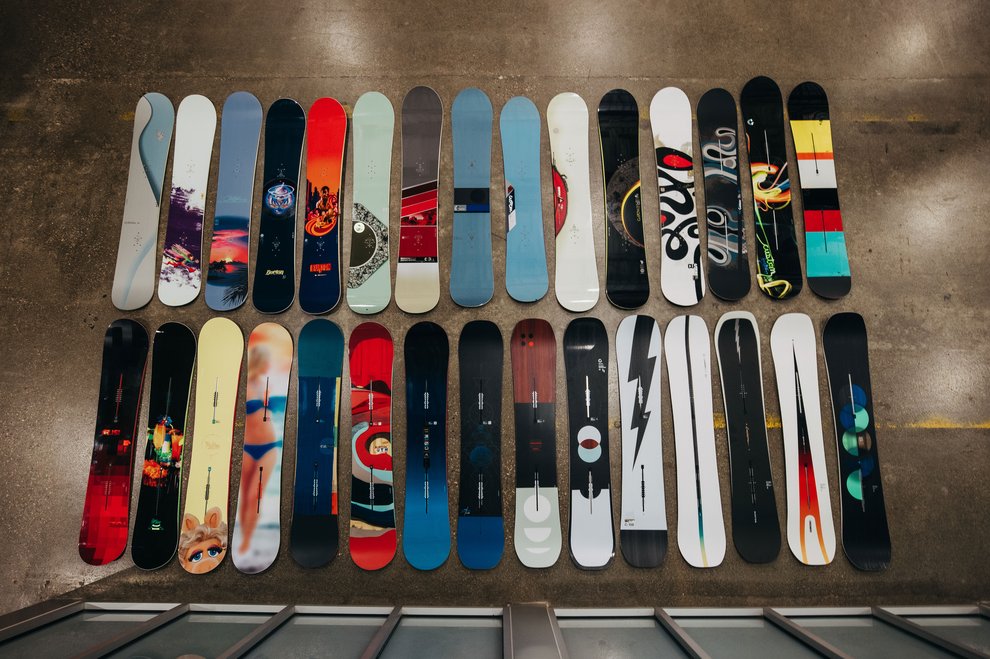
Birth of a Legend: Custom Development & Launch in 1994–1996
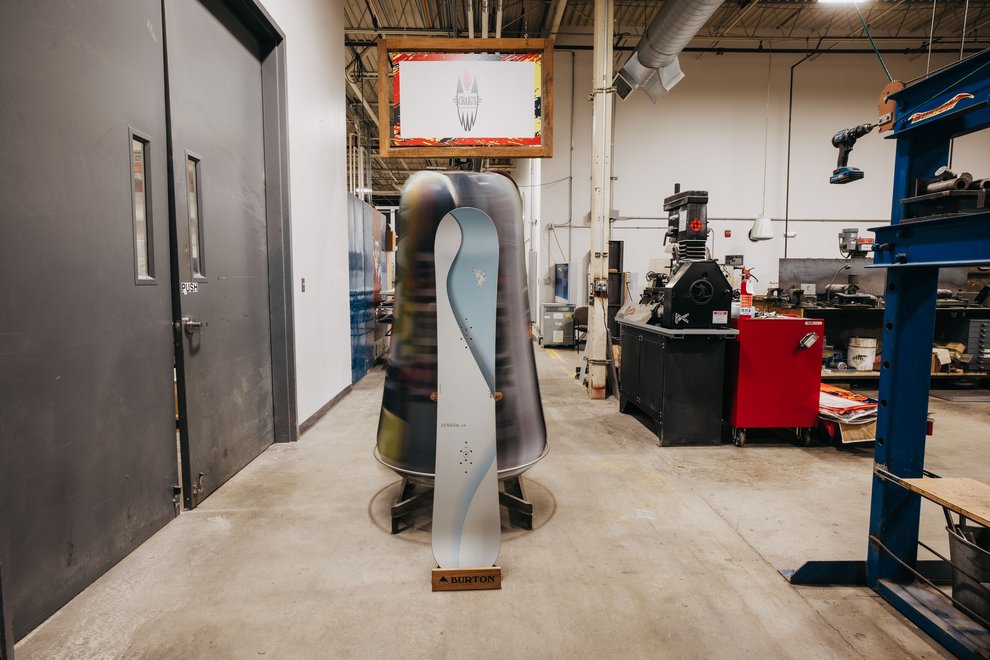
Officially unveiled at a Burton sales meeting in January of 1995 and launched for the first time the following winter (1995/96 season), the Burton Custom was born out of explosive demand for freestyle twins and made possible by Burton’s own innovation in snowboard materials and construction methods.
Former Burton engineer and product manager Paul Fidrych was one of the key people at the time, finding himself at the intersection of snowboard design, materials development, and R&D. He had an intimate, insider view of what was needed. Paul recounted, “Our goal was to create the most versatile snowboard, one that was light enough to spin, floaty enough for powder, and could still carve and hold an edge in all conditions.” But the problem wasn’t vision, it was how to execute.
In a nutshell, Burton’s mid-90s offerings in the freestyle space lacked a premium, performance-focused model, with the biggest limitation being materials. Building the Custom required a revolution, so to speak. Ultimately, Burton’s tight-knit family of board builders innovated in three primary ways to achieve this: fiberglass, wood cores, and snowboard construction.
Triax fiberglass had been a staple in Burton’s alpine boards, but bringing its edge-hold and torsional stiffness into freestyle required Dave Dodge and the Burton R&D team to develop a new “Lite Triax” layup. This lighter fiberglass gave strong edge hold but in an overall package that was forgiving enough to spin and press. On the core side, Burton broke away from heavy, glue-laden Swiss veneers and pioneered locally sourced Aspen laminates (the A-Core), soon followed by the Aspen/Balsa SuperFly™ core that shaved more than a pound off the final weight. In construction, new sidewall blends of ABS and TPU solved delamination issues, while wet-laminate production was fine-tuned to cut excess epoxy and further lighten the ride.
Prototype testing was equally critical. In August 1994, John “JG” Gerndt and team rider Dave Downing traveled to Wanaka, New Zealand, with 14 prototypes in tow. Downing spent two weeks running each board through powder fields, groomers, cat tracks, and side hits while JG, sidelined with a broken leg, logged every detail. “From the Air series to the Custom was like going from a regular board to a pro model. Way lighter, way higher level,” Downing recalled.
Riders like Dave Downing and Joe Curtes were quick to back the prototypes, pushing for a higher-end board they could truly stand behind. And while the Custom began as an evolution of the aging Air line, it gained its own identity late in the process when an early topsheet read “Custom Air” and was quickly shortened to just “Custom.” That name stuck, the design clicked, and the legend was born.
Lighter, Faster, Stronger, and Here to Stay: Custom in the Late ‘90s
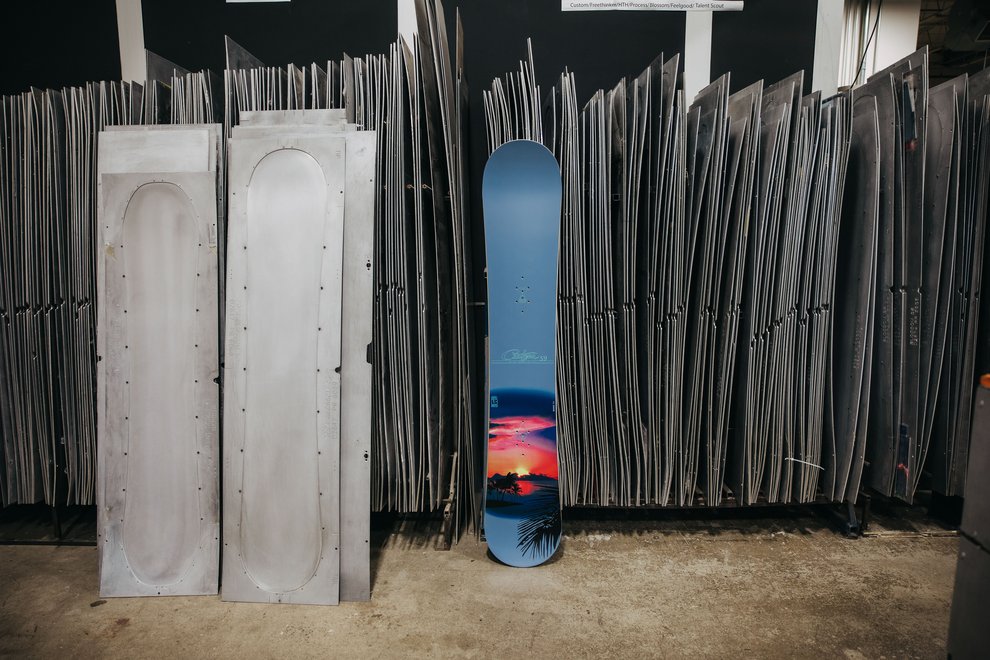
The lead-up to the Custom’s debut in winter ’95/’96 was marked by an accelerated development cycle, but that didn’t hurt anything, in fact the opposite. Custom saw immediate, explosive success. Paul recalled: “When the Custom hit retail, sales went through the roof.” The board was instantly embraced, filling a void riders and retailers had been waiting for.
Building on their momentum, Burton’s engineers continued pushing the envelope with cores. In 1998, the original AB8/SuperFly core evolved into the SuperFly II, introduced on Burton’s Pro Decks as well as the Custom. It swapped more Aspen laminates for lighter balsa, cutting weight without sacrificing strength.
By this time, the Custom was no longer just Dave Downing’s and Joe Curtes’s board. Riders like Aleksi Vanninen, Jason Brown, Ryan Williams, Brad Scheuffele, Bryan Iguchi, and Victoria Jealouse had adopted it, further proof that Burton’s refinements were hitting the mark on snow.
With refinements like these, the Custom quickly cemented itself as the most versatile and performance-oriented option in Burton’s line: light, durable, and powerful.
Tech Trickle-Down: The Custom in the 2000s
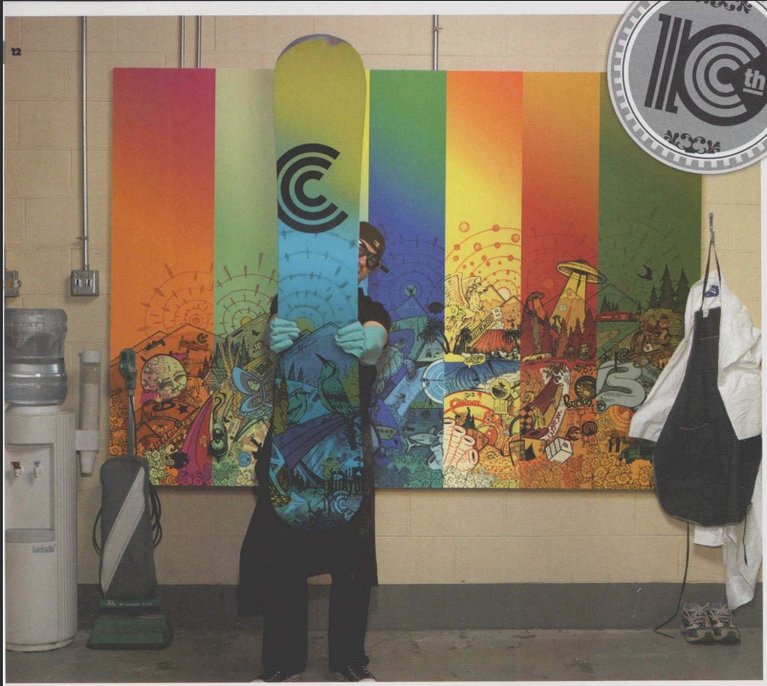
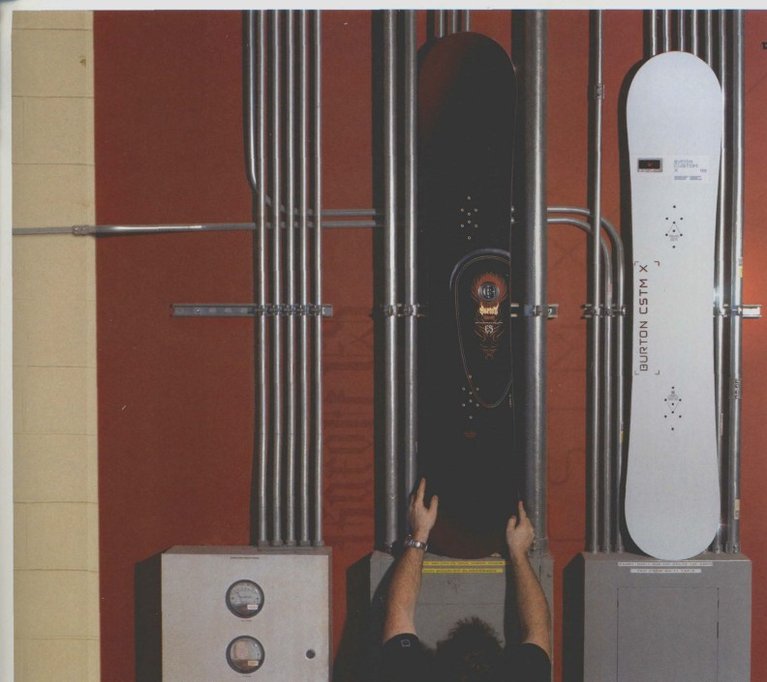
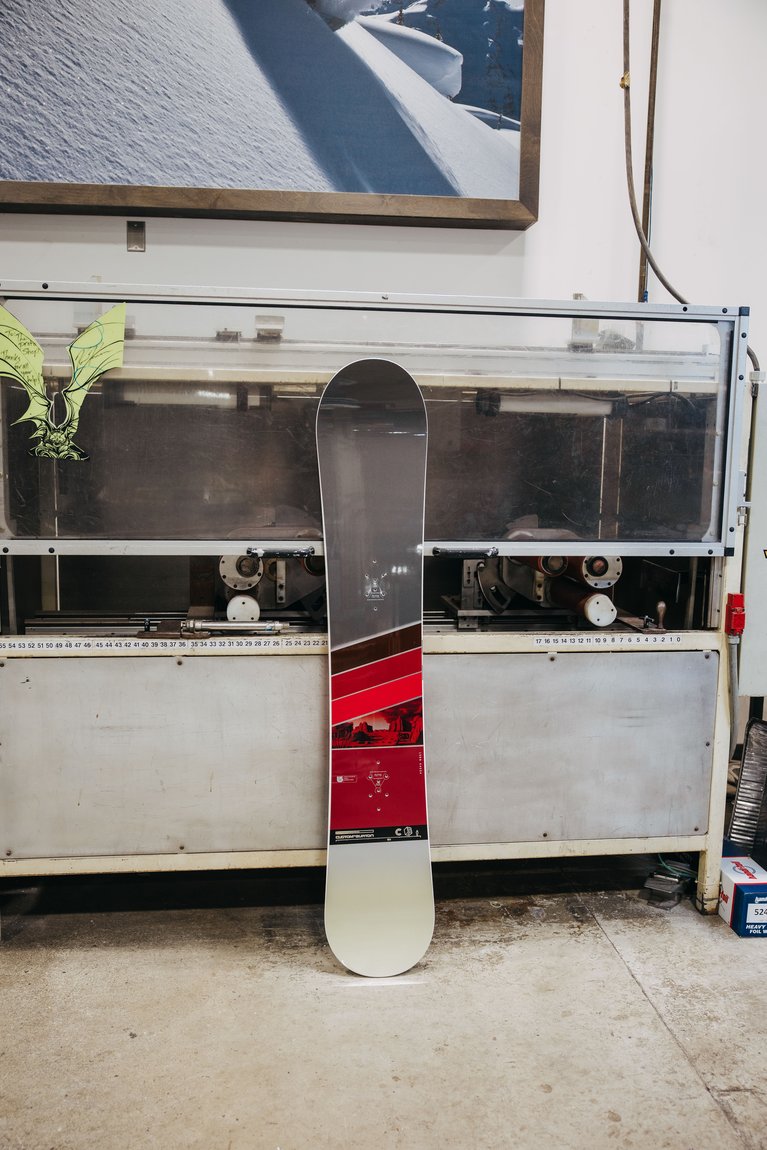
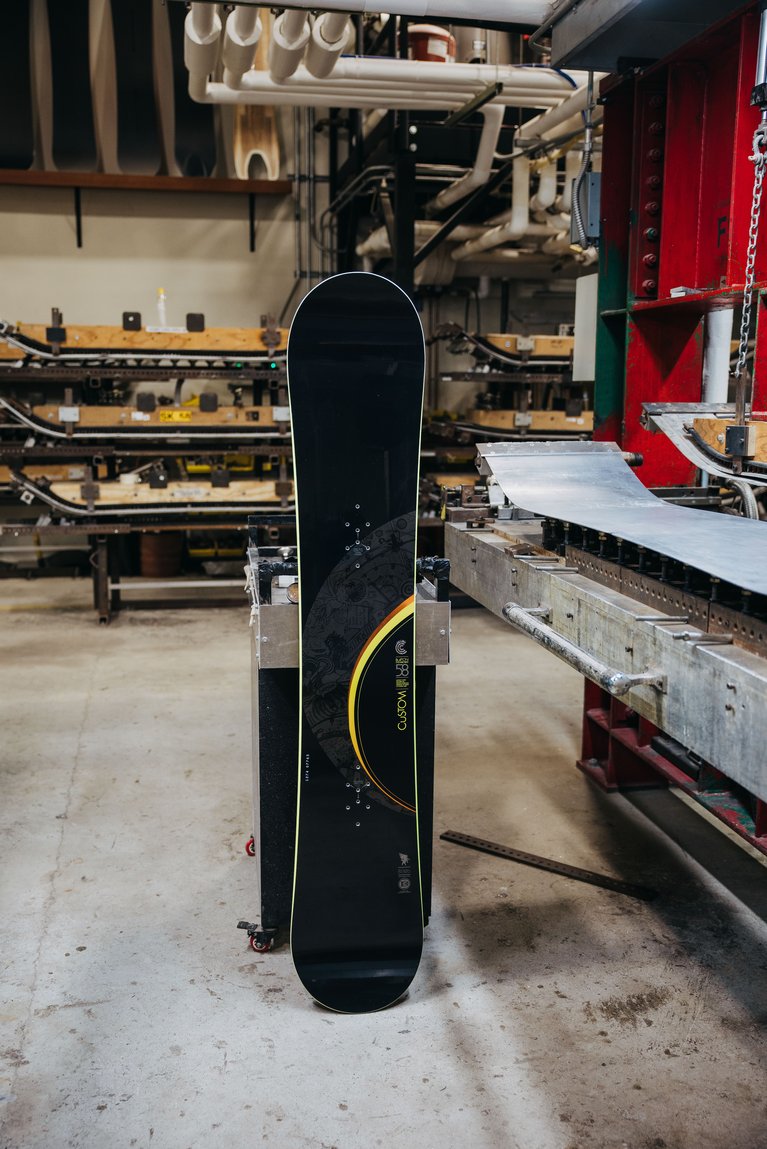
If the Custom’s first decade was about breaking ground, the 2000s marked a shift. Now firmly established as Burton’s flagship, the Custom became the ultimate beneficiary of Burton’s most premium innovations. Tech that debuted on experimental or ultra-high-end models—boards like the Vapor, Pro Decks, or the FL Project—soon found its way into the Custom, transforming it into a showcase of Burton’s best ideas refined for everyday riders.
That pattern started in 2000 with Engineered Grain Direction (EGD). Introduced with the FL Core, EGD rotated the wood grain 90 degrees underfoot to improve edge hold, durability, and responsiveness. By the early 2000s, it was being integrated into the Custom, giving riders a more precise, controlled feel. Not long after, Carbon I-Beam tech followed the same path—first appearing on FL Project boards, then incorporated into the Custom to add longitudinal pop and stiffness while preserving torsional flex for smoother turns.
In 2004, Burton doubled down on performance with the launch of the Custom X, a stiffer, more aggressive sibling designed for riders who demanded maximum response. The Custom X became the playground for new materials and layups, many of which trickled back into the standard Custom. By 2006, the Custom celebrated its 10th anniversary with a collage of throwback graphics from icons like Downing and Curtes, while continuing to absorb Burton’s best engineering and tech innovations.
2007 brought two more leaps: Vaporskin construction, which debuted on the Vapor Snowboard, shaved up to half a pound of weight when applied to the Custom X; and the addition of Burton’s WFO sintered base to the Custom, boosting speed and durability. A year later, the Custom and Custom X Wide arrived, expanding the family to suit riders of all shapes and sizes.
By the late 2000s, the Custom wasn’t just a single board—it was a platform. Between the Custom, the Custom X, and the new Wide options, it offered something for nearly everyone and every style of shredding, all while carrying the trickle-down of Burton’s top-tier material innovations. Graphics and cultural energy also surged, with riders like Heikki Sorsa, Mads Jonsson, and Mason Aguirre pushing the board into new terrain. During this era Jonsson even set the still-unbroken world record for the biggest backside air ever—187 feet—on a Custom, another moment that further established Custom’s place in the snowboarding history books.
Profiles and Performance Tweaks: 2010s
The 2010s were punctuated by refinement and variety for Custom, letting riders fine-tune their experience, while holding true to the core traits that established it back in ‘96.
In 2010, Burton introduced Squeezebox tech, strategic core profiling (zones of varying thickness) that made flex more responsive underfoot and stable between the bindings. It was added to Custom. That same year, the Custom V-Rocker appeared, and in 2011 the Custom Flying V followed, pairing rocker between and outside the feet with camber underfoot for focused edge control, added pop, and powerful turns. These new profiles sat alongside the traditional camber Custom, giving riders additional options in the same franchise; a quiver of Customs to choose from.
The decade also saw the Custom name stretched in new directions. Restricted Customs, released between 2012 and 2014, offered limited-run graphics—cocktails, Muppets, even a bathing-suit pinup—sold only through core shops. These boards never appeared in the regular Burton catalogs, so finding and adding one to your collection was an accomplishment that required a bit of luck. A Custom Twin (a true twin, not directional) appeared briefly, paving the way for what would later become the Blossom. Little groms got their own with the Custom Smalls, and there was even a Custom Splitboard, although it’s difficult to track down much detail on that particular model.
Culturally, the Custom remained front and center. And in 2016, the Custom’s 20th anniversary brought throwback topsheets that honored its lineage, reminding everyone that despite its age, Custom was still as relevant (and rad) as ever.
All Grown Up: The Custom in the 2020s
If the 2020s have shown us anything, it’s that staying power doesn’t mean standing still. While the Custom’s dimensions have remained unchanged, Burton has continued refining materials and manufacturing with an eye toward the future. Since 2018 the board has carried squared-off tips, but beneath that subtle update, the DNA remains intact; same sidecut, same lengths, same ride.
During this time sustainability has been playing an increasingly important role for Burton as a business too. In snowboards, this is reflected by FSC-certified wood cores, Super Sap resin, and other intentional material choices. Of course, these changes have been incorporated into the Custom, bringing it in line with Burton’s broader mission to reduce our business impact without sacrificing performance.
On snow, the Custom has proven it’s as competitive as ever. At the 2023 X Games, Ayumu Hirano landed the world’s first triple cork in competition on a Custom, stamping the name into halfpipe history. In 2021, Mikkel Bang rode a Custom to victory at Natural Selection Alaska, a reminder that even in the most progressive freeride events on the planet, this thirty-year-old shape still delivers.
2025 marks the Custom’s thirtieth anniversary with a nod to its past. Ben Ferguson’s Custom Custom project highlights the board’s enduring versatility, while honoring the original design roots with a Pegasus, just like that first Custom in ‘95. How else might this icon be reinterpreted in the future? Time will tell.
Three decades in, the Custom continues to evolve while staying exactly what it was always meant to be: the most versatile snowboard ever made.
Coming Full-circle: The Custom in 2025
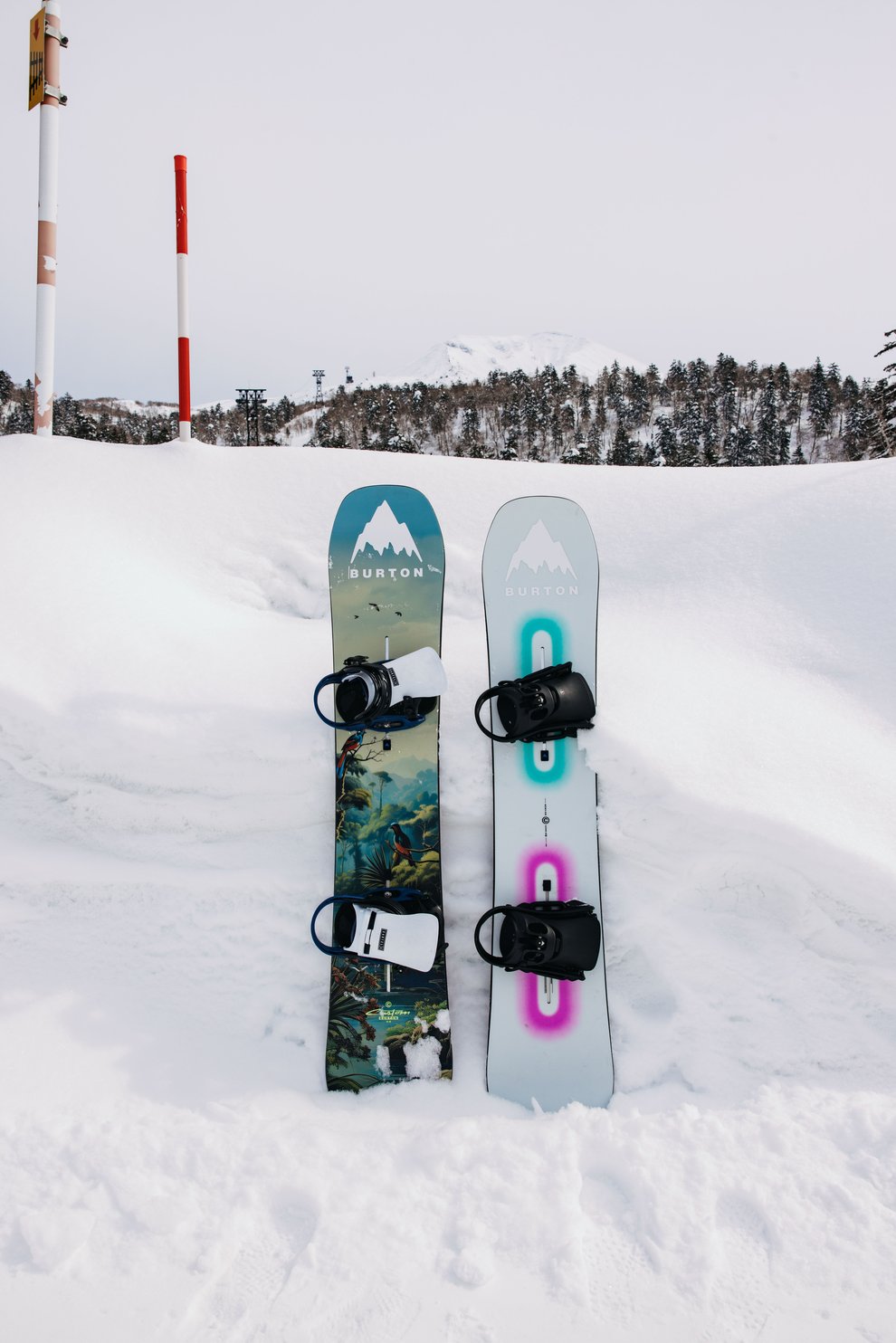
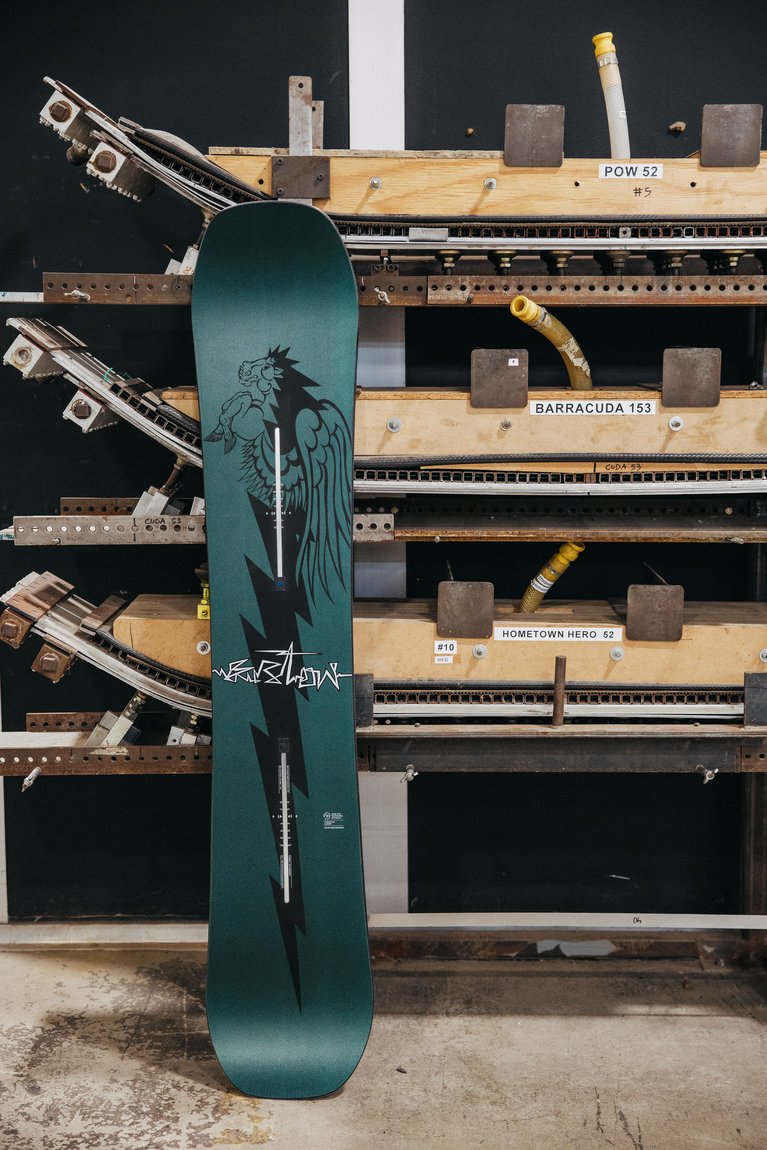

Looking back at the past three decades, plenty has changed—materials, construction methods, and graphics—but the Custom has maintained its original shape and do-it-all utility. The Custom you ride today is essentially the same board you could have ridden in the winter of ’95/96. It’s wild to think that the team who developed the original got it so right that nothing fundamental ever needed to change. As Dave Downing put it, “The math of that board is exactly the same as it was… the shape hasn’t changed in 30 years.”
What has changed are the innovations that started with the Custom in ‘96—lighter cores, new glass layups, sidewalls, bases—that raised the bar. That’s the Custom’s legacy. It’s a board that not only shaped Burton’s line but helped shape snowboarding itself.
